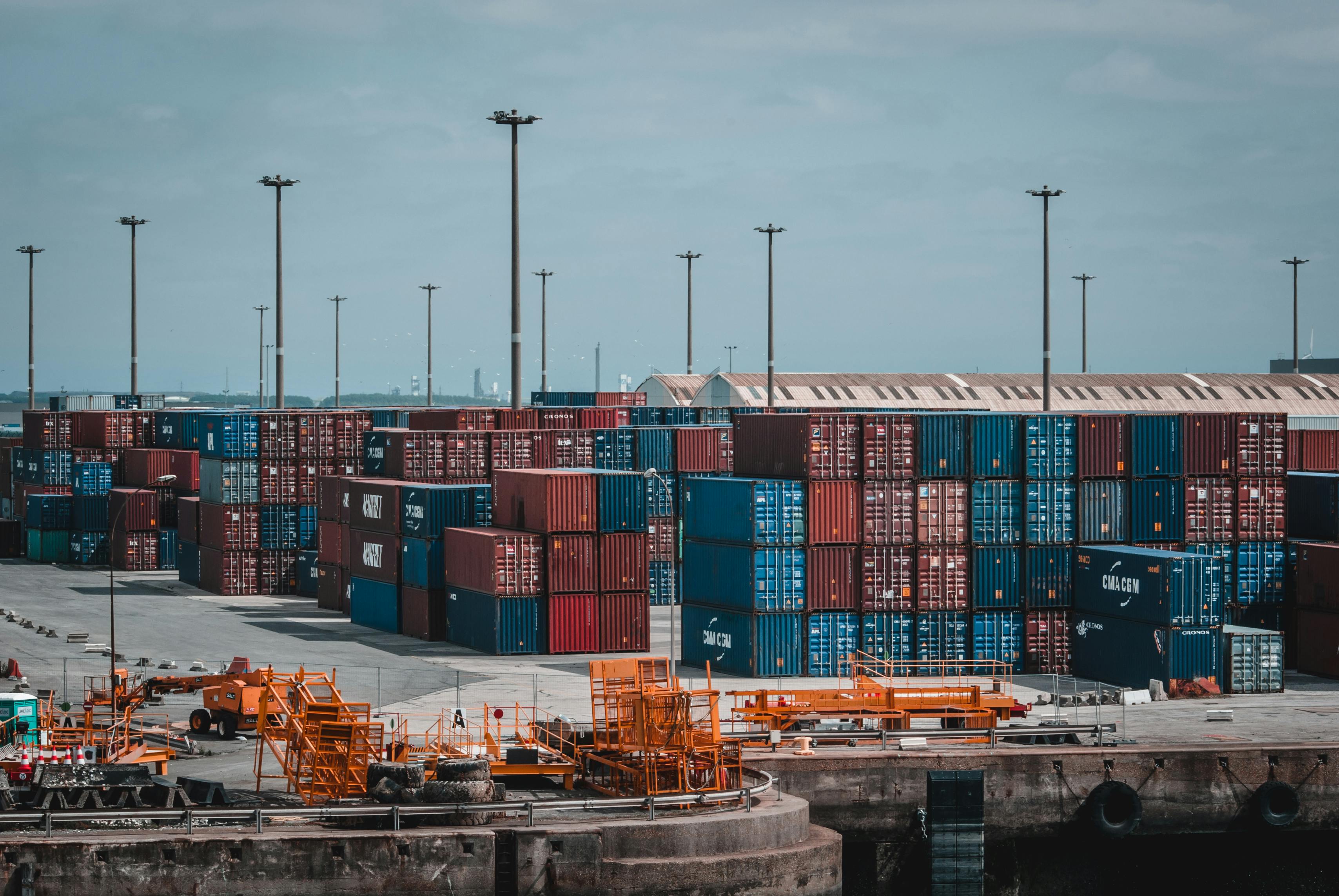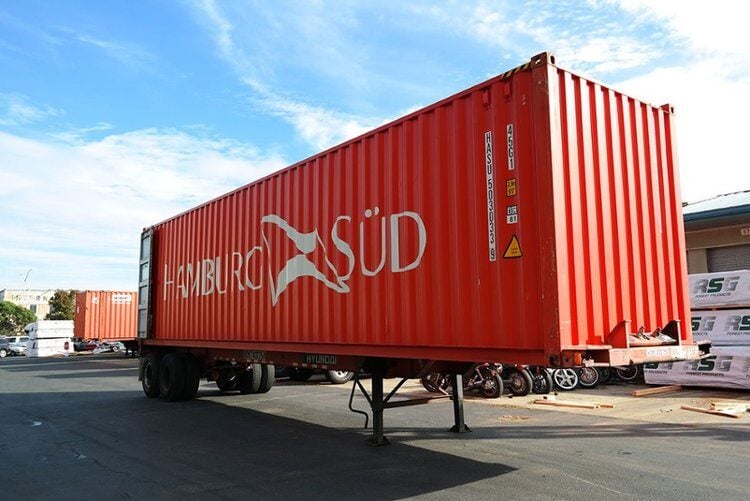How Many Cars Fit in a Shipping Container? | West Coast Shipping
Determining how many vehicles can fit into a shipping container is both an art and a science—one that directly impacts the safety and cost-effectiveness of international vehicle transport. At West Coast Shipping, we’ve optimized container loading configurations for everything from vintage motorcycles to modern SUVs, ensuring every cubic inch of space is used efficiently while maintaining uncompromised protection.
Understanding Container Dimensions: The Foundation of Efficient Loading

Shipping containers come in standardized sizes, but their internal dimensions and load-bearing capacities vary slightly between manufacturers. Here’s how the two most common types break down:
20-Foot Standard Container
-
Internal Length: 19' 4" (5.89 meters)
-
Internal Width: 7' 8" (2.34 meters)
-
Internal Height: 7' 10" (2.38 meters)
-
Door Opening: 7' 8" wide x 7' 5" high
Typical Capacity:
-
1 standard sedan (e.g., Toyota Camry) with room for personal items
-
2 compact cars (e.g., Mini Cooper) loaded end-to-end
-
1 SUV (e.g., Ford Explorer) with 12" clearance on all sides
40-Foot High-Cube Container
-
Internal Length: 39' 5" (12.01 meters)
-
Internal Width: 7' 8" (2.34 meters)
-
Internal Height: 8' 10" (2.69 meters)
-
Door Opening: 7' 8" wide x 8' 5" high
Typical Capacity:
-
3-4 mid-sized sedans (e.g., Honda Accord)
-
2 full-size trucks (e.g., Chevrolet Silverado)
-
1 luxury vehicle (e.g., Mercedes S-Class) + 2 motorcycles
For a complete breakdown of container types and their applications, explore our comprehensive guide to vehicle container shipping.
Key Factors Influencing Vehicle Capacity
1. Vehicle Dimensions
The table below shows how different vehicle classes impact container space utilization:
| Vehicle Type | Length | Width | Height | 20ft Capacity | 40ft Capacity |
|---|---|---|---|---|---|
| Compact (Honda Civic) | 14' 11" | 5' 11" | 4' 9" | 2 | 4-5 |
| Full-Size (Toyota Camry) | 16' | 6' | 4' 11" | 1 | 3 |
| SUV (Jeep Grand Cherokee) | 16' | 6' 4" | 6' | 1* | 2-3 |
| Pickup (Ford F-150) | 19' 6" | 6' 6" | 6' 5" | 1* | 2 |
2. Loading Configuration
-
Single-Level: Traditional end-to-end loading for operational vehicles
-
Multi-Level Racking: Proprietary systems like R-Rak allow angled stacking
-
Mixed Cargo: Vehicles combined with personal items or auto parts
3. Container Modifications
-
Removable Side Panels: For oversize vehicles exceeding standard door widths
-
Reinforced Floors: To handle heavier vehicles like electric trucks
-
Ventilation Systems: For long-term storage of classic cars
Real-World Loading Scenarios
Scenario 1: Collector Shipping Three Classic Cars
A client needed to transport a 1965 Ford Mustang (15' 3"), 1970 Chevrolet Camaro (15' 6"), and 1985 Porsche 911 (13' 9") from Los Angeles to Tokyo. Using a 40-foot container with our R-Rak angled racking system, we positioned the Porsche vertically at a 45° angle, creating space for the two American classics side-by-side.
Scenario 2: Dealership Consolidation Shipment
An auto dealer shipped eight Nissan Sentras from Jacksonville to Rotterdam by combining two 40-foot containers. Our team used EL-Rak external loading frames to create double-decker storage, fitting four vehicles per container.
For more examples of cost-effective multi-vehicle shipments, see our case study on consolidated shipping to European markets.
Cost-Saving Strategies Through Smart Loading
1. Consolidated Shipping
Share container space with other vehicles heading to the same destination port. Our weekly consolidated services from California, Florida, and New Jersey can reduce costs by up to 60% compared to exclusive container bookings.
2. Mixed Cargo Optimization
Maximize unused vertical space by adding:
-
Motorcycles in wheel chocks
-
Auto parts in custom crates
-
Household goods in vacuum-sealed bags
3. Seasonal Timing
Book during off-peak seasons (January-March) when container rates drop by 15-20%.
4. Port Pair Selection
Shipping between Los Angeles and Yokohama costs 22% less than Oakland-Tokyo routes due to higher cargo volumes.
For dealerships and frequent shippers, our volume-based logistics program offers additional tiered discounts.
Specialized Equipment for Maximum Efficiency
R-Rak Angled Racking System
-
Increases 40-foot container capacity by 110%
-
Allows safe stacking at 30°, 45°, or 60° angles
-
Compatible with vehicles up to 6' 7" tall
EL-Rak External Loading Frame
-
Enables forklift loading of non-running vehicles
-
Protects undercarriages during placement
-
Reduces loading time by 70%
Laser Alignment Guides
-
Project laser grids to ensure perfect positioning
-
Prevent door frame contact during loading
-
Customizable for different vehicle classes
Check how cars are loaded in containers
Why Choose West Coast Shipping?
With over 17 years of experience in international vehicle logistics, we bring:
-
Three Strategic U.S. Hubs: California (15,000 sq ft), Florida (45,000 sq ft), New Jersey (70,000 sq ft)
-
Custom Loading Solutions: Developed for supercars, EVs, and prototype vehicles
-
Transparent Pricing: All-inclusive quotes with no hidden fees
-
Live Loading Updates: Photo/video documentation available upon request
Explore Container Shipping Further
Understanding container capacity is just one aspect of international vehicle transport. For detailed insights into documentation, insurance, and customs clearance, visit our complete guide to container shipping.
You May Also Like
These Related Stories

How Many Cars Fit in a Shipping Container? | West Coast Shipping

Wholesale Car Shipping to Georgia | Car Shipping to Georgia Solutions
.png)
-093789-edited.png?width=220&height=79&name=wcs_final_logo_(1)-093789-edited.png)
